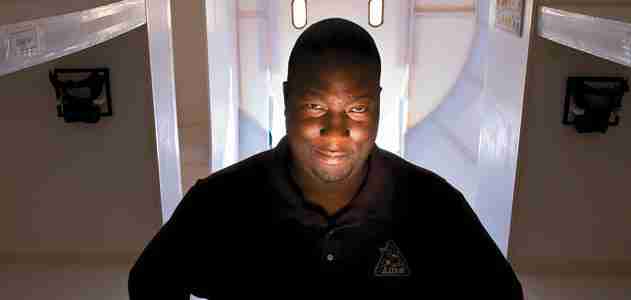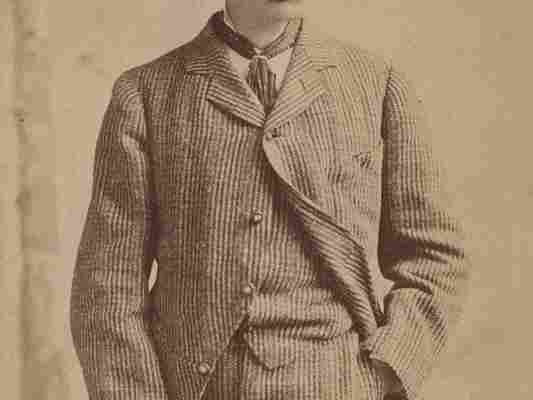Welcome to Your World

A strong current swept in a bounty of jellyfish that September day, along with an irresistible opportunity for Thomas Vignaud, who was free-diving with underwater camera gear in the Mediterranean off the South of France. The 22-year-old marine biology student positioned his strobe light near one yellow jelly so that it seemed to glow, and held his breath to compose the (breathtaking) shot that won the Natural World category of our 5th Annual Photo Contest.
This year we received nearly 7,000 entries in five divisions: The Natural World, People, Travel, Americana and Altered Images (for manipulated photography). Amateur photographers from 50 states and 82 countries submitted work, and our winners are from all over. Three are from India (including Abhijit Dey, whose portrait, of a newborn in a West Bengal village won the grand prize—a Smithsonian Journeys trip for two); Vignaud is French. Even Hal Schneider, a Californian who won the People category, shot his winning photograph in Burkina Faso.
Lance Wills, an American who took the prize for Americana, travels the world as a deckhand aboard oceanic research vessels. Unable to sleep during a stay in the nation's capital, Wills photographed the Washington Monument just before midnight. Even at that late hour tourists were snapping photos by the monument's floodlights. Did they see what he saw in this familiar subject? Almost certainly not, judging by the similarity of submissions we receive of the iconic obelisk year after year.
A gallery of winners and more finalist images are available on this site. "Eyes on the World: Smithsonian Magazine Photo Contest," an exhibition of the images, will be on display at the Smithsonian Castle from July 1 through January 15, 2009.
Grand Prize Winner, People Abhijit Dey, age 35 • Barrackpore, India Photographed August 2007 Six days after Betka Tudu's birth, female relatives and neighbors in the West Bengal village of Purulia gathered to bless him and "to protect him from harm's way," says Dey. Born into the Santhal tribe, Betka "unknowingly drew his distant kin closer than ever."
Marseille, France Photographed September 2007 "I'm an underwater photographer before all," says Vignaud, who photographed these juvenile fish and the jellyfish while diving off his father's sailboat. Some underwater photographers think "almost everything has been done already," he says. "I don't believe it."
San Diego, California Photographed November 2006 Masked dancers greeted Schneider's tour group on a visit to the village of Boni, well off the beaten track in West Africa's Burkina Faso, but he was drawn to a group of watchful boys instead. "I wanted to capture that look of curiosity of these kids," says Schneider.
North Charleston, South Carolina Photographed April 2007 Photographing the Washington Monument late one night, Wills watched tourists get up close to stroke the stone. "It struck me that like America itself, the Washington Monument could not be fully appreciated from afar. Its grandeur grows as you approach."
Kanpur, India Photographed December 2007 The fountain was shot in Pennsylvania and the children (the photographer's niece and nephews) in Chakdaha, India. "The person in the background is me," says Pal. "The idea was to show the necessity of cleaner and safer water, not just for drinking but for everything."
Santa Ana, California Photographed June 2007 "This was the play that scored the winning run in the bottom of the last inning," says Weiderhaft of a championship Little League game between crosstown rivals in Orange County. "I focused my camera through the chain-link fence" to capture the moment of both thrilling victory and stunning defeat.
Agra, home of the Taj Mahal, Hindu women immersed in water pray to the sun for prosperity for two days. They celebrate the setting sun first, says Sengupta, then "welcome the fresh rising sun on the very next morning."
Abigail Tucker is Smithsonian 's staff writer.
Ulrich Boser on “Diamonds in Demand”

Ulrich Boser, a Washington D.C.-based freelancer, also writes for the New York Times , Washington Post , Slate and the U.S. News & World Report , where he is a contributing editor. He is currently working on a book about the world's largest unsolved art heist.
What was the most interesting lab-grown diamond that you actually saw? I think what's curious about the lab-grown diamonds is that they can make them into all shapes and sizes. So you could see lab-grown diamonds at the nano scale. You could see very large plates—dinner plate size—that were covered with little diamonds, perhaps to be used to sand something. Chemical vapor deposition [CVD] diamonds are made in these large tubes, and when you see them immediately come out, they don't look very diamond like. They're square and look like a piece of tinted glass. So it's surprising to see these and then think someone cuts them into actual diamonds.
How did your feelings on lab-grown diamonds change by working on this story? I think initially I had thought that I would somehow be able to tell. I don't know why I thought that. But we think, oh, they're grown in a lab you would have thought that it had some markings on it, some sensibility, something about it that would be visible to the naked eye.
What was your favorite moment during reporting? They [Apollo] lent me a few of their diamonds, which was a little bit nerve wracking. I had to sign a form and tell them I would repay them if I lost these diamonds. So I was meandering around Boston with some loose diamonds in my pocket, showing the diamonds to various jewelers and seeing their reactions. Watching how surprised they were at how good these diamonds were and explaining to them how they were made really impressed upon me how much these diamonds really are exactly like the diamonds you'd find in a ring or that had been mined in the earth thousands of years ago. They would study the diamond; one even brought out some of his smaller devices to see if it was cubic zirconium or moissanite. They really couldn't tell the difference. These were regular, on the street diamond merchants, and they were very nervous about what this diamond means for the jewelry industry. Having them call over their colleagues, like "Can you believe this thing?" was just very eye-opening.
For Michelangelo, Quite a Tome

I tried to think of a witty way to start this, but all that kept running through my mind was the fact that this book costs $155,000. Sure, it is a book of photographs taken by Aurelio Amendola of Michelangelo’s sculptural works. Amendola is internationally recognized for his photography of sculpture, so the images are sure to be skillfully taken to show every chisel mark and claw scratch the artist ever made. And, sure, Michelangelo is a heavyweight Renaissance master and wouldn’t we all love to have a brand new book of his work, but $155,000?
But then this book has a lot of bells and whistles. First of all, it weighs just over 46 lbs as it is covered in a scale reproduction of one of Michelangelo’s earliest works -- a marble relief known as the Madonna of the Stairs . It is printed on paper made specifically for the book and is handmade all the way, from typesetting and printing to binding and covering. It includes the already mentioned Amendola black and white photos as well as removable handmade folios of Michelangelo’s drawings (reproductions, of course). It also comes with a 500-year guarantee.
The book was published by Gruppo FMR , an arts publishing house specializing in art, culture and luxury goods. And apparently the Michelangelo book is only the first in what FMR is calling its “Book Wonderful" series. But with a limited print run of 99 and a 6-month wait to get the book (as it is handcrafted upon order), the Michelangelo copies are sure to absolutely fly off the shelves. So reserve your copy today. But don’t try Amazon. I already checked.




Post a Comment